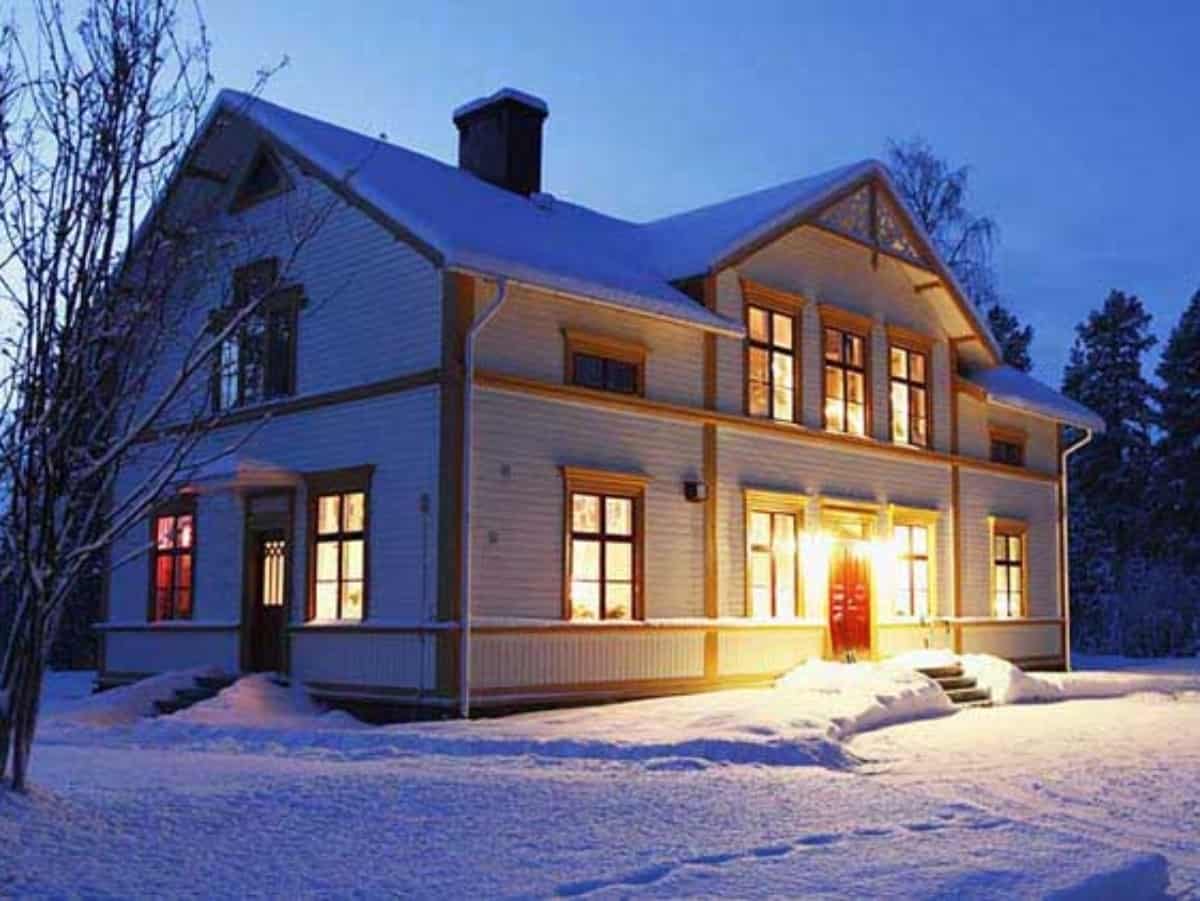If you’ve been wondering what to set thermostat to in winter, you’ve come to the right place. This article will help to explain optimal thermostat settings during winter. That will allow you to get the most out of your energy dollar and avoid those ultra-high bills each month.
After reading the material below, you should have all the information you need to keep your household warm and comfortable. It will also help you to save money on your monthly energy bills. If you can take advantage of some of the tips and tricks described below, you should see your energy bills begin to decrease.
What to Set Thermostat to in Winter To Prevent Your Pipes from Freezing
One of your prime concerns in the wintertime is to avoid having your pipes freeze. This is particularly true if you live in an area that gets cold. If this happens, it can cause all kinds of messy problems like burst pipes, and that will be an expensive repair job. The best way to avoid this is to have your pipes wrapped with solid insulating material. That way, the cold air won’t freeze them solid and trigger an emergency in your household.
However, if you’re not sure whether your pipes have been protected, you should take steps to prevent the possibility of a freeze yourself. One of these steps is to ensure that every room in your home is set to at least 55 degrees Fahrenheit. This resolves the question of what to set thermostat to in winter, and should prevent any mishaps, even in areas where there is low traffic. For example, your basement or cellar.
In your kitchen and bathroom, open cabinet doors so that warm air can circulate all around any pipes that happen to be located there. To be sure your pipes don’t freeze the first time the outdoor air takes a drop, you can let your water spigots drip slowly all day. That will keep water flowing through your pipes, and the flowing water will prevent freezing.

When You’re Away from Home
When you plan to be away from your home for at least four hours, you can comfortably set your thermostat five degrees lower in the wintertime. This comes into play when you’re leaving for a workday and want to save money on that energy bill.
In situations where you know you’ll be gone for several days, you might wonder what to set thermostat to in winter, to avoid possible damage. This is all while still being economical. You can safely set your thermostat somewhere between seven and ten degrees lower than normal. This can amount to significant savings. This is because your HVAC system won’t have to work so hard to maintain the warmer temperature while you’re gone.
Can the Temperature be Too High?
You can set the room temperature too high, both for comfort and for energy savings. In the wintertime, a good temperature to establish and maintain would be 68 degrees, although some people prefer a setting closer to 72 degrees. By setting the temperature too high at some point, you’ll be conditioning occupants to get used to that higher temperature. Then, they will need that extra warmth all the time to feel comfortable. Anything above 72 is too high, and anything above 68 is probably unnecessarily high.
Room-by-room Temperature Settings
At the risk of stating the obvious, the lower you set your thermostat in the wintertime, the more energy and money you’ll save. The US Department of Energy has declared that Americans can save as much as 10% a year on heating bills by lowering thermostats by 7-10 degrees Fahrenheit for at least eight hours each day. The ideal room temperature for any room in your household will, of course, be a matter of preference. However, all preferences aside, most rooms in your household will be just fine if they’re set between 66 and 68 degrees Fahrenheit.
Here’s a room-by-room approach for what to set thermostat to in winter:
- Bathroom – If there’s one room in the household that should be kept a little warmer, it will be your bathroom, since people will be bathing and showering there. In this room, it’s acceptable to leave the temperature set at around 71 degrees. However, most of the rooms in your household will be just fine in a lower setting.
- Kitchen – You can usually keep the kitchen temperature lower, because your refrigerator and your oven will give off a certain amount of heat, and that will tend to keep the room warmer.
- Bedrooms – Ideally, the temperature settings in bedrooms should be kept between 62 and 64 degrees Fahrenheit, because sleeping tends to be better at a lower temperature. Some individuals even prefer temperature settings lower than this when they’re sleeping.
- Attics and basements – If no one spends much time in these rooms normally, you should set them at a much lower temperature. Somewhere between 55 and 68 will usually be fine for these areas since you don’t need to keep anyone warm.

When to Adjust the Temperature
Once you start getting close to the coldest season of the year, it’s normal to start considering when to turn the heat up in your home. The best approach is to consider thermostat adjustments around mid-fall, as opposed to in January when winter is in full swing. Typically, you’ll need to begin heating your home in October, and continue heating it through to April.
By the end of April, you may no longer need to heat your home, although that will depend on weather patterns in effect at that time. At any rate, you can always count on the coldest months, December through February. This group of months is when you will normally need to increase the temperature in your household most frequently. If you want to reduce your energy bills, you should begin heating your home later and stop heating your home sooner each year.
Night-time Thermostat Settings
There are approximately 120 million households in the US, 65% of which are equipped with central air conditioning. Less than a third of households equipped with a programmable thermostat don’t adjust their thermostats on any given day. That means they’re heating empty rooms at night to midday temperatures.
This can work to keep your energy bills artificially high since you’re wasting energy by heating unoccupied rooms overnight. Whatever you have your thermostat set to during the daytime, you can comfortably lower it several degrees at night. Even during the winter, household temperatures can comfortably be set between 62 and 66 degrees. If you have thermostats in several rooms throughout your household, this will be even easier to manage.
Find a comfortable setting for each of the rooms in your household at night and stick to that setting to realize energy savings. You can help your cause by closing the doors to unused rooms at night or when you’re away. That will make it easier for your heating system to keep only those rooms that are occupied warm and comfy.
If you want to cash in on energy savings, purchase a smart thermostat that can automatically adjust temperature settings in your household. Another benefit of this approach will be that you can take advantage of any incentives offered by your energy provider. That can also contribute to your overall energy savings.
Open Your Windows Briefly
An often-overlooked element of your heating picture at home involves proper ventilation. It’s a good idea to open some of the windows in your household 5-10 times. This ensures you have a good exchange of air in the wintertime. Plus, it can help establish proper humidity levels. When you don’t have enough humidity indoors, the mucous membranes of your body dry out faster than normal.
That can lead to a whole variety of wintertime problems such as dry skin, dry throat and nose, and a greater risk of catching a cold. If the humidity level happens to be too high, that can create conditions ripe for breeding mold in your home. To avoid all this, simply open up some of the windows in your household for about 10 minutes at various times throughout the day. This will help to stabilize humidity levels in your home, and it will save you some money on energy bills.

Look To Optimize Energy With ONIT Home Solutions
For anything involving home services and the systems needed to maintain your household, you can contact us at ONIT Home Services. We offer several services to homeowners that are designed to increase the comfort and value of your home. In the area of home heating, we install highly energy-efficient solar power systems that will provide you with an inexpensive, sustainable power source.
Our specialty in a nutshell is to simplify and demystify home services, so they have maximum value to our customers. If you should need any of our other services, e.g. water filtration, security, roofing, concierge, or insurance, please do contact us right away. At ONIT, we make a point of making your home systems and services more usable and more useful to you. Call us today at 1-833-433-0331 to get started!



